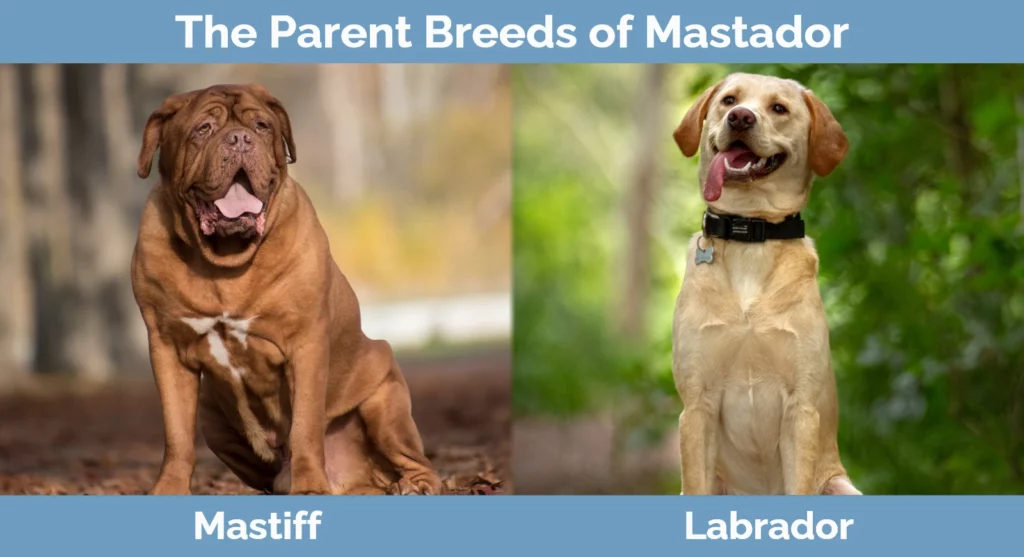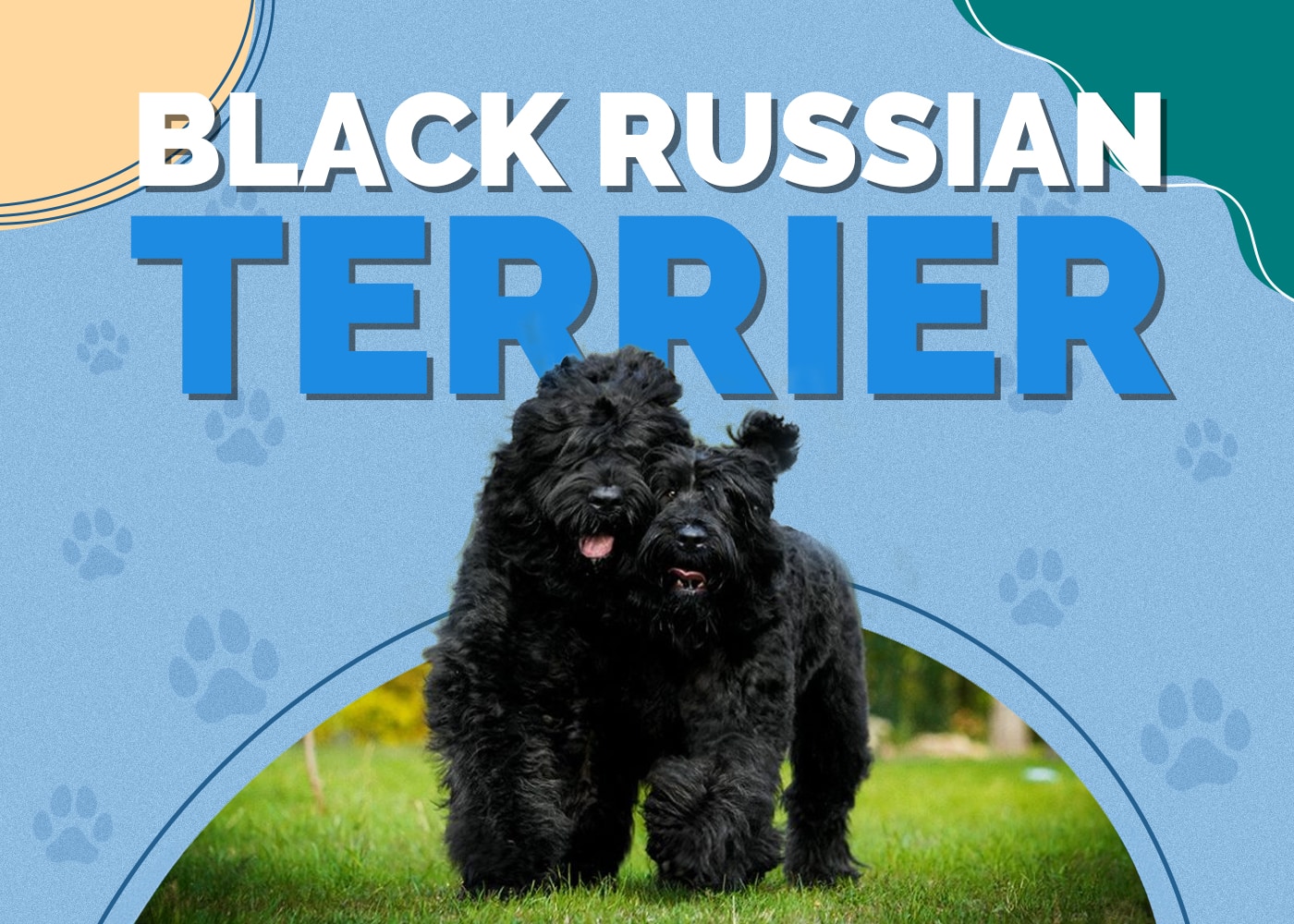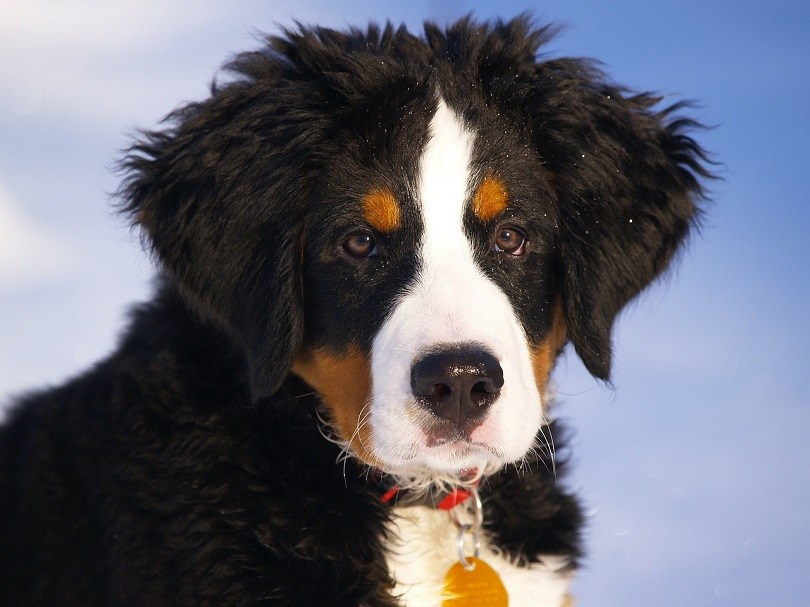Mastador (Labrador & Mastiff Mix) Info, Pictures, Facts, Traits

Updated on

| Height: | 26–32 inches |
| Weight: | 100–200 pounds |
| Lifespan: | 10–12 years |
| Colors: | Black, yellow, tan, brindle, fawn, chocolate |
| Suitable for: | Active families with children, households looking for a watchdog, owners that are home often |
| Temperament: | Loyal, affectionate, gentle, calm (as an adult), confident, intelligent, somewhat wary of strangers |
With the imposing size and confidence of the Mastiff and the caring and gentle nature of the Labrador Retriever, the Mastador is the ultimate family pet and household watchdog. Though they may seem oversized and intimidating, Mastadors are very loyal to their families and will naturally protect them. These hybrids are especially gentle with children, so they’re perfect for active families looking for a big, big dog. They’re quite energetic as puppies and can be a handful at first, but they eventually calm down as they age.
Let’s take a closer look to see why the Mastador is quickly becoming a popular hybrid.
Mastador Puppies

Though Mastadors are not purebreds, they come from two popular breeds that can increase their price. Also, the rise in designer dog breeds has created a niche market in hybrids, which also influences the cost. Some may be more expensive due to genetics and appearances.
3 Little-Known Facts About the Mastador
1. Mastadors are Gentle Giants
Though rather large and imposing, Mastadors are gentle giants with their families and especially with children. These large dogs may seem intimidating to outsiders, but they are extremely loyal and bond closely to their families.
2. Mastadors Calm with Age
While they are calm and well-mannered as adults, Mastador puppies can be a handful. They’ll have loads of energy and personality as puppies, but they eventually settle into a calmer, quieter dog after a few years.
3. Mastadors are Very Affectionate
Mastadors are very affectionate and crave attention from their families, often forgetting that they’re no small lap dogs. If you’re looking for an oversized couch potato that will snuggle up to you for hours, the Mastador will not disappoint.

Temperament & Intelligence of the Mastador 🧠
Mastadors are not purebred dogs, so it’s difficult to accurately describe their temperament and other characteristics. The best way to know what to expect with your new Mastador puppy is to look at the purebred parents and see what temperaments they have. However, it’s no guarantee that your puppy will have these qualities, so it’s crucial to keep that in mind.
Labrador Retrievers are famed for their easy-going, calm nature and intelligence. Often considered America’s favorite breed, Labs are relatively easy to train and have natural athletic abilities that make them popular amongst a variety of lifestyles. Though they do have a lot of energy, especially as puppies, Labradors have a kind and gentle nature that few dog breeds possess. They’re also eager to please and will excel in obedience classes and competitions if given the time and chance to learn.
English Mastiffs may seem intimidating, but these dogs are the teddy bears of the big dog world. They have a keen sense of intelligence and awareness that makes them excellent protectors, but their gentleness and loyalty make them great for families with children. Early socialization with people and animals is crucial for this oversized canine, but they will still remain wary of any strangers on their property.
Mastadors are typically considered an even mix between the two, so you should expect your dog to have a natural guarding instinct. Though they may not be the star athlete like their Labrador relatives, Mastadors can do well in obedience training. As with Mastiffs, early socialization is important to teach boundaries with new people.
Lastly, Mastadors are similar to Mastiffs in that they do NOT do well alone for long hours. They prefer to be with their owners throughout the day, so it’s crucial that you have the time and patience for them. Your Mastador will follow you around like a very big shadow, so we recommend skipping this hybrid if you can’t handle that level of attachment.
Are These Dogs Good for Families? 🏡
Yes! Mastadors are excellent with children, even smaller and more rambunctious kids. Mastadors tend to forget their size and strength, but they rarely play too rough for children. These dogs are natural guard dogs that enjoy sitting back and watching the kids play while always remaining alert to their surroundings.
Does This Breed Get Along with Other Pets? 🐶 😽
Yes. Mastadors are calm and accepting of most pets and animals, though early socialization is crucial to prevent accidents. Some Mastadors inherit the Lab’s strong prey drive, so smaller animals and cats may be a temptation. However, these dogs are usually easy-going and usually do well with other dogs. Before buying a Mastador puppy, make sure your current pet can handle a new family member.

Things to Know When Owning a Mastador:
Food & Diet Requirements 🦴
Mastadors are prone to weight gain and obesity due to their Mastiff genetics, so you’ll want to look for a high-quality kibble with no fillers. These dogs do best with dry food that has lots of protein, formulated specifically for large dogs. We recommend staying away from specialized diets unless prescribed by your veterinarian.
Exercise 🐕
Since Mastadors are prone to weight gain, daily exercise is important to keep them healthy and fit. Some Mastadors will enjoy exercising and daily walks, while others would rather eat and nap all day. Regardless, they’ll need at least a few brisk walks to keep their weight in control. Consider joining a dog-friendly walking group to keep your Mastador in shape while also providing a chance to socialize.
These dogs need lots of space just for their size alone, but also to roam around. Mastadors are natural watchdogs and will want to walk around the homestead. Make sure you have adequate space for a dog that weighs over 150 pounds. We recommend a fenced-in yard in case your Mastador may roam too far.
Training 🦮
Mastadors are smart and capable of learning a variety of obedience commands. They do best with high-value treats and consistent training, as well as giving them praise in a calm manner. These dogs are somewhat sensitive to harsher training methods, which will cause them to become stubborn and even resentful.
It’s crucial to be patient and gentle with these big dogs because they’ll balk at a serious challenge. If you seem to be struggling with training your Mastador, we recommend hiring a dog trainer who specializes in Mastiff-type breeds.
Obedience classes and competitions are great ways to not only exercise and train your dog but also provide a fun place for your puppy to socialize. Look for local dog classes nearby to enroll, which will keep your dog on a consistent schedule.

Grooming ✂️
Mastadors have short coats that shed a lot, so expect to be vacuuming on a daily basis. They only need to be brushed out once in a while to help reduce shedding, as well as the occasional bath. Some Mastiffs have sensitive skin, so be aware of this before trying new bathing and grooming products. Otherwise, grooming and coat maintenance of your Mastador puppy is easy and won’t eat up your time.
Health and Conditions ❤️
While Mastiffs and Labradors have long histories to look at, Mastadors are relatively new to the scene. It can be difficult to know what you’ll have to face down the road with your new puppy, especially since Mastiffs and Labradors have similar and different health issues. The best way to prepare is to look at the common health problems that both Labs and Mastiffs face:
- Hip Dysplasia
- Obesity/Hypothyroidism
- Elbow Dysplasia
- Cervical Vertebrae Instability (Wobbler’s Syndrome)
- Cardiovascular Disease
- Bloat
- Skin Disorders (Allergies, Chronic Dryness)
- Cancer
- Epilepsy
- Hip Dysplasia
- Bloat
- Laryngeal Paralysis
- Hypothyroidism
- Elbow Dysplasia
Both Labradors and Mastiffs have similar health issues, including Hip/Elbow Dysplasia, Bloat, and possible weight issues. Though Mastiffs have a shorter lifespan (8–10 years) than Labradors (10–14 years), Mastiffs often live healthy lives. While we can’t guarantee your Mastador puppy won’t inherit these conditions, it’s best to prepare for them in the future should they arise.

Final Thoughts
Mastadors are truly one of the best family dogs around, even compared to popular purebred family dogs. These loyal giants will not only show you love and affection, but they’ll show you true loyalty. Though they’re calm enough as adults to live in a quiet home, they’re best for families and dog owners who are home often. Mastadors are also great with training and can excel in obedience if given the chance to learn, with only some stubbornness that may arise in their early years.
If you’re looking for a big dog that does well with children and you have the space for a giant-sized dog, the Mastador will exceed your expectations.
Featured Image Credit: Corrie Mick, Shutterstock











